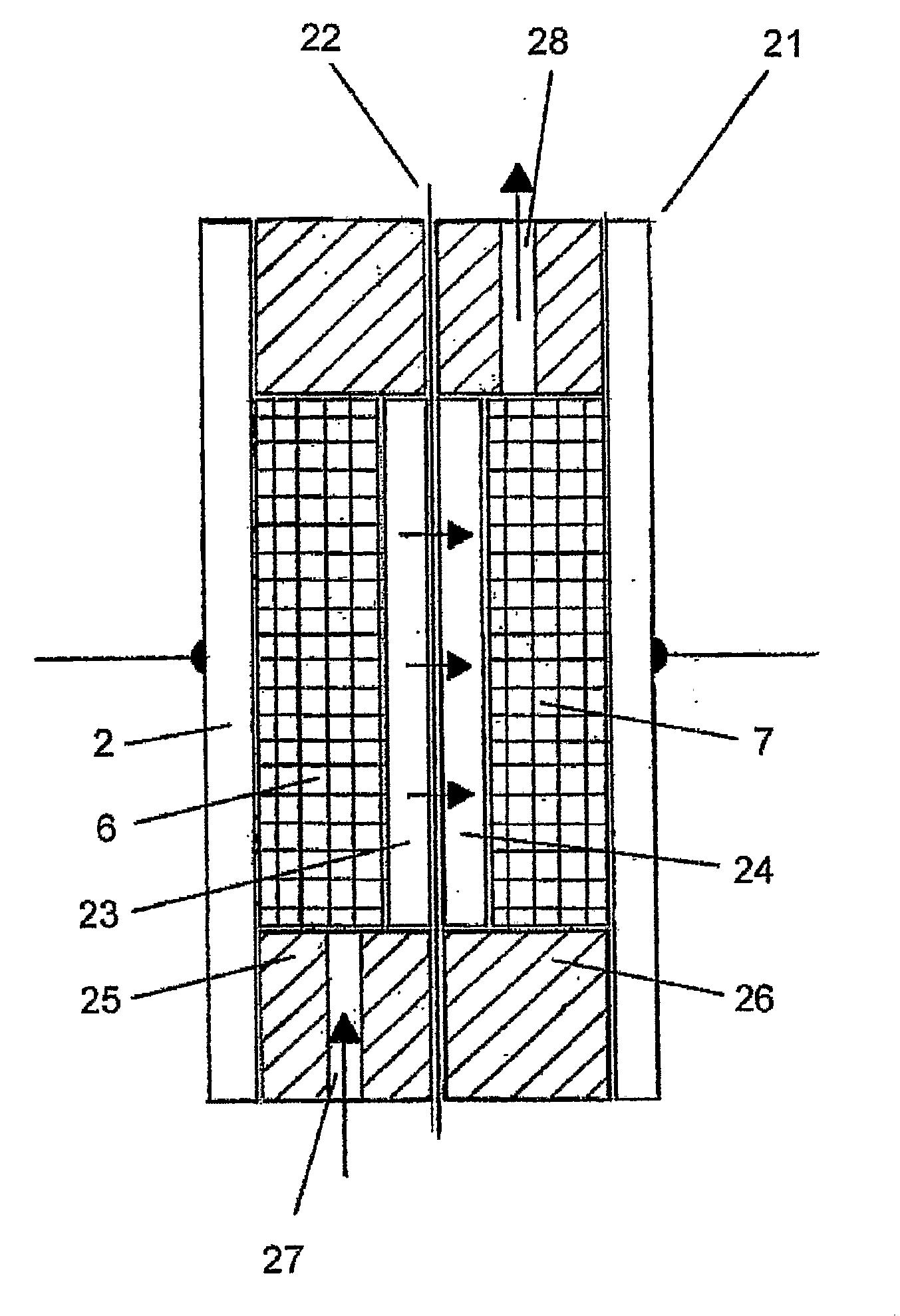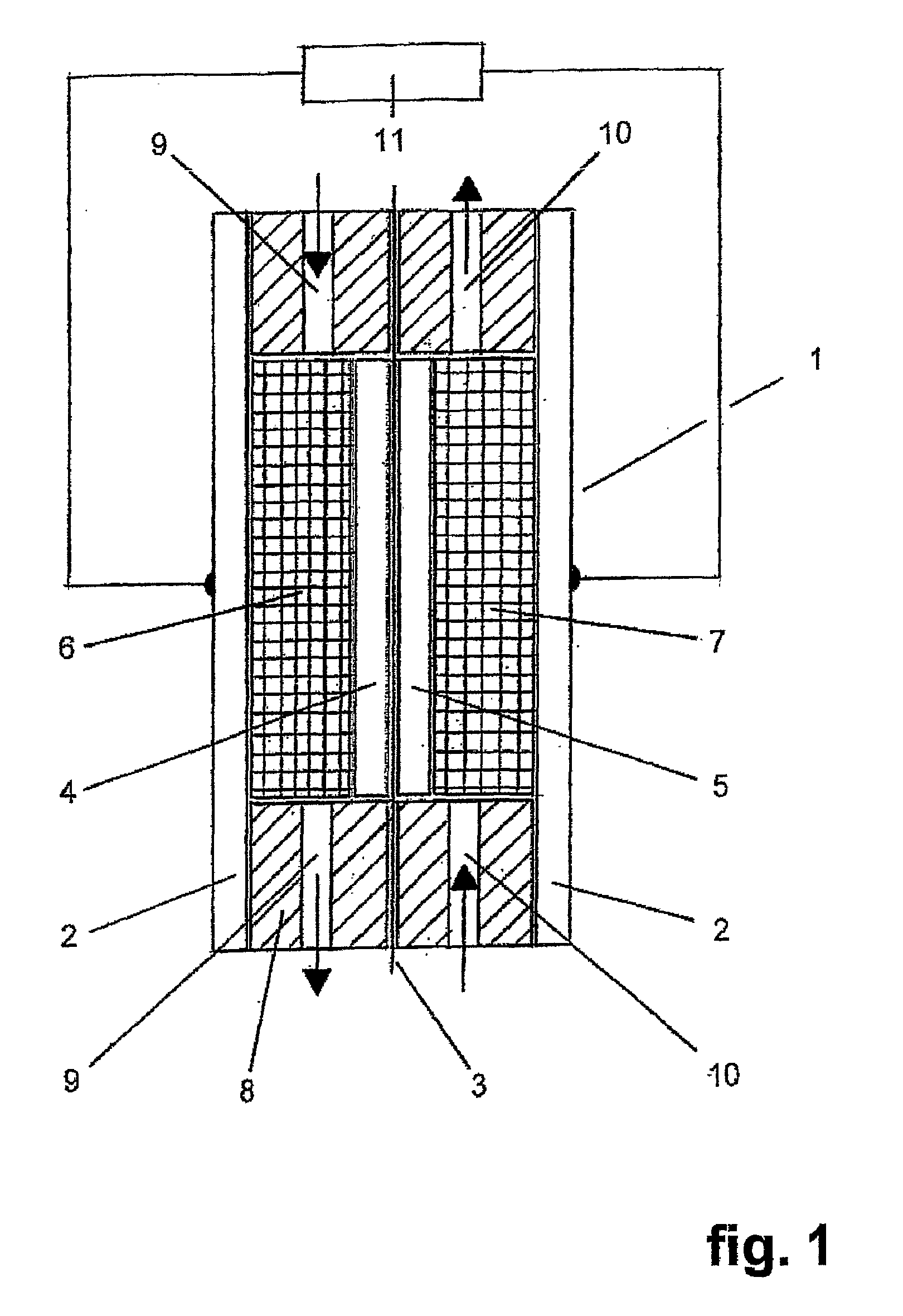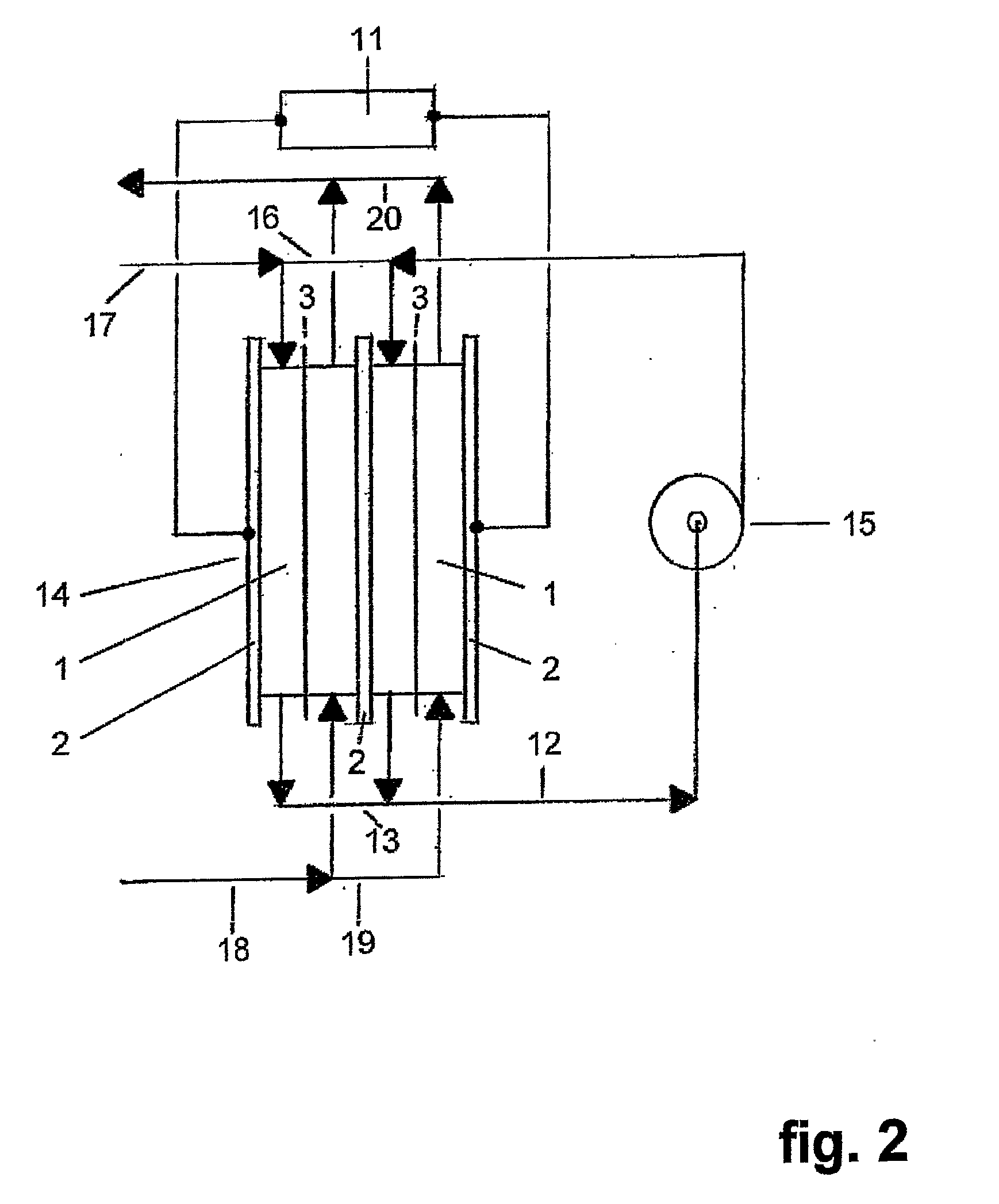Fuel Cell With Hydrogen Internal Recirculation
a fuel cell and internal recirculation technology, applied in the direction of cell components, electrochemical generators, separation processes, etc., can solve the problems of abnormal mechanical solicitation of the delicate ion-exchange membrane whose lifetime may thus be shortened, and the excess of hydrogen must be exploited
- Summary
- Abstract
- Description
- Claims
- Application Information
AI Technical Summary
Problems solved by technology
Method used
Image
Examples
first embodiment
[0033]the invention is represented in FIG. 6, which sketches a side-view of a stack comprising, only for the sake of graphic simplification, two units each consisting of a fuel cell (1) of the type of FIG. 1 co-laminated and integrated with a hydrogen-transfer cell (21) of FIG. 3.
[0034]The side-view of the stack is partially represented in section and shows the integration in accordance with the invention between the components of a hydrogen-transfer cell (21) and an adjacent fuel cell (1): in particular, the cathodic current collector of the hydrogen-transfer cell also constitutes the fuel cell anodic current collector and hence the hydrogen-transfer cell (21) cathode compartment acts as the fuel cell (1) anode compartment. As a consequence, the gap comprised between two consecutive bipolar plates results subdivided into three portions, respectively, proceeding from left to right: hydrogen-transfer cell anode compartment; hydrogen-transfer cell cathode compartment coinciding with t...
second embodiment
[0035]the invention is represented in FIG. 7, which sketches a side-view of a stack comprising two units, each consisting of a fuel cell (1) of the type of FIG. 1 mechanically associated by common lamination with a hydrogen-transfer electrochemical cell (21) of FIG. 3. The partial section of the side-view shows that the hydrogen-transfer cell (21) and the adjacent fuel cell (1), comprised between two external bipolar plates, maintain their identity being kept separate by a further intermediate bipolar plate. In this case the integration between the hydrogen-transfer cell and the fuel cell is of functional type: the hydrogen produced at the cathode (24) of the hydrogen-transfer cell is in fact injected into the fuel cell anode compartment through a series of aligned holes, indicated as (29), on the intermediate bipolar plate. in particular, the recycled hydrogen is not sent to the external distributing manifold (16) as occurs in the prior art. Hence, also with the latter constructive...
PUM
| Property | Measurement | Unit |
|---|---|---|
| pressure | aaaaa | aaaaa |
| operating temperatures | aaaaa | aaaaa |
| pressure | aaaaa | aaaaa |
Abstract
Description
Claims
Application Information
 Login to View More
Login to View More - R&D
- Intellectual Property
- Life Sciences
- Materials
- Tech Scout
- Unparalleled Data Quality
- Higher Quality Content
- 60% Fewer Hallucinations
Browse by: Latest US Patents, China's latest patents, Technical Efficacy Thesaurus, Application Domain, Technology Topic, Popular Technical Reports.
© 2025 PatSnap. All rights reserved.Legal|Privacy policy|Modern Slavery Act Transparency Statement|Sitemap|About US| Contact US: help@patsnap.com



